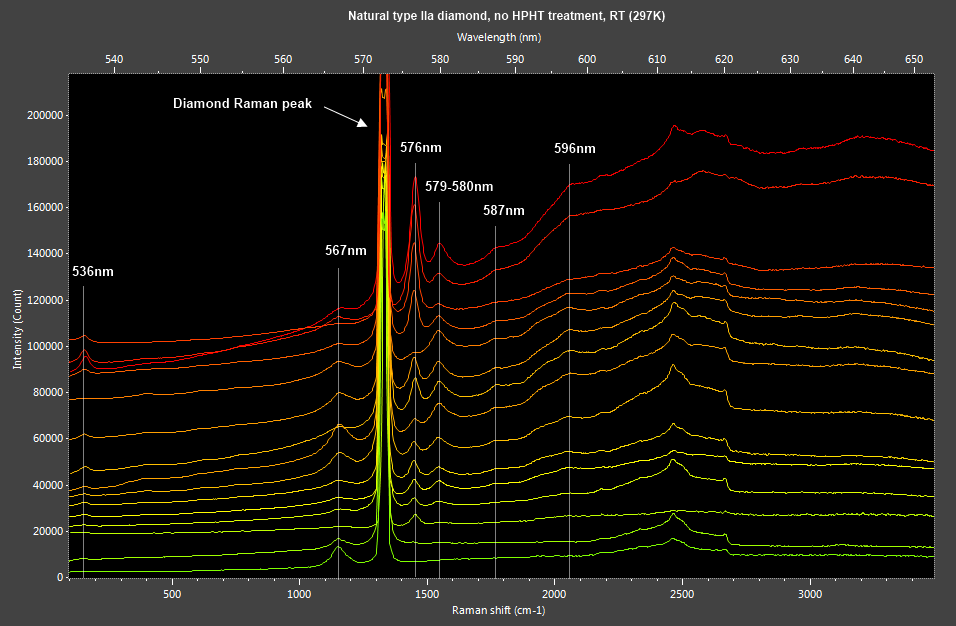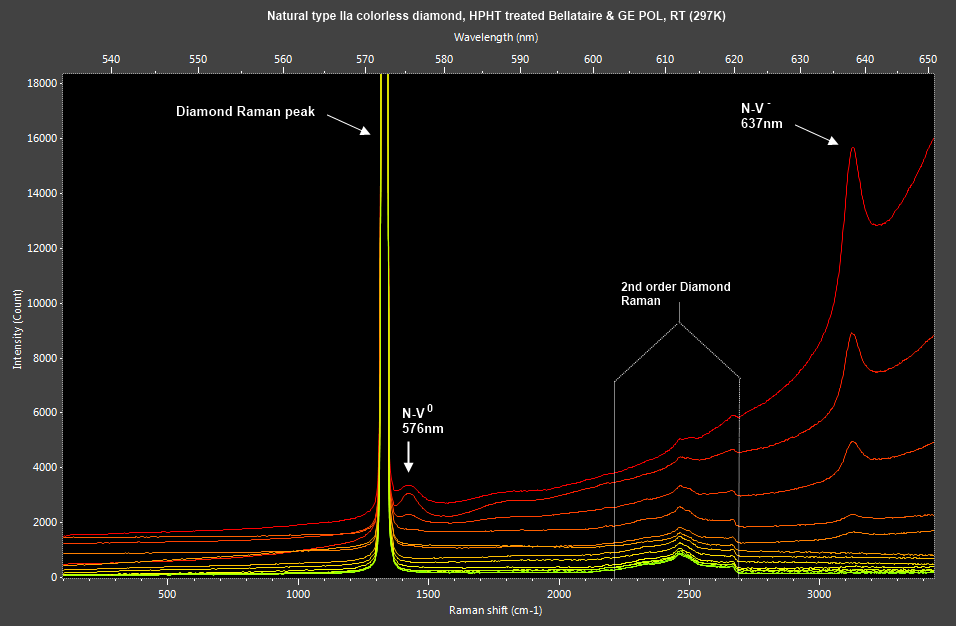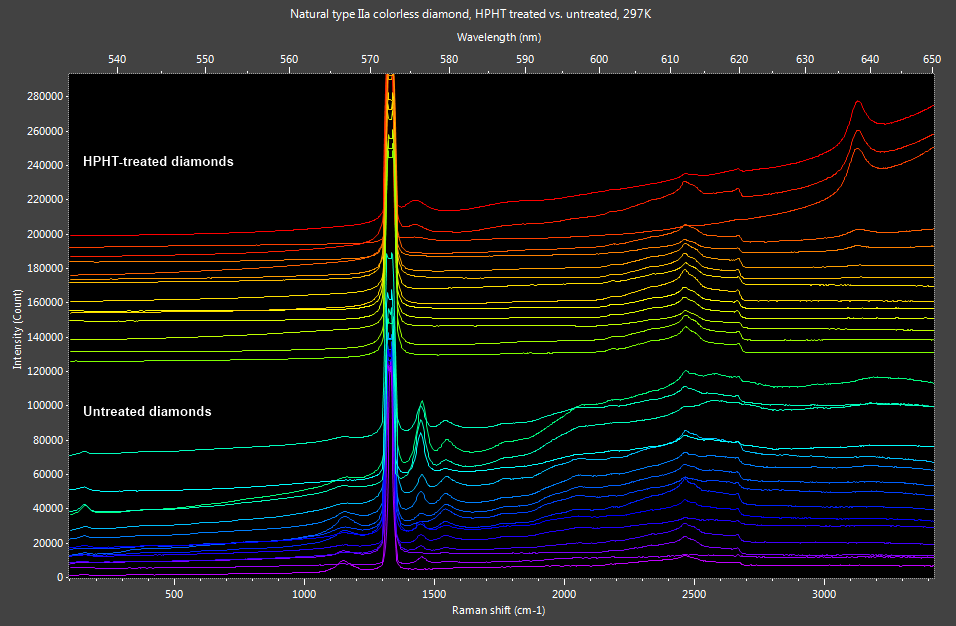Photoluminescence studies with GemmoRaman-532 or GemmoRaman-532SG
Before proceeding
The reason for all above tests in the preface section of this application note is that the following photoluminescence tests can only be applied to natural type IIa diamond. IaB natural diamonds are indeed extremely rare and, as the IIa type, can be successfully submitted to HPHT color enhancing treatment. Unfortunately, due their rarity there is not enough material available to perform statistically valid PL studies.
Room temperature (297K)
Spectral acquisition at room temperature (RT, 297K) is the more convenient method of the two. In the case of colorless IIa diamonds it provides surprisingly good results. Therefore, it is suggested to perform PL tests first at room temperature and later in liquid nitrogen immersion (LNT, 77K).
Untreated stones
Natural untreated diamonds of type IIa exhibit a series of typical small photoluminescence peaks which tends to be annealed (removed) by HPHT treatment.

Figure 1. Photoluminescence peaks at 536 nm, 567 nm, 579-580 nm, 587 nm and 596 nm at room temperature are very strong indicators a type IIa natural diamond has not been HPHT processed.
Most untreated diamonds exhibit nitrogen-vacancy crystallographic defects in their uncharged state (N-V0) at 576 nm in room temperature. This defect can also be negatively charged (N-V-) causing a PL peak at 637nm. Strong peak at 576 nm combined with absence of 637nm peak can be an additional non-diagnostic clue that the sample has not been HPHT processed.
HPHT-treated stones
HPHT treatment removes or severely attenuates most of the PL peaks present in untreated stones. Their spectrum may lack any PL features, leaving only first and second order diamond Raman peaks visible. In some cases Nitrogen-Vacancy defects may be visible as broad bumps at 576 nm (N-V0) and/or 637 nm (N-V-).

Figure 2. HPHT treatment has annealed most of the photoluminescence peaks detected in untreated stones. While N-V peaks at 576 and 637nm anneal out in commercial high temperature HPHT-treatment, new N-V defects may formed if the diamond contains minor type Ib component. In that case N-V- peaks at 637 nm are typically stronger than N-V0 peaks at 576 nm, but this "rule" is not diagnostic and has proved to have many exceptions.
Crystallographic defects causing the above mentioned PL peaks for natural untreated diamonds are not fully understood. However, their tendency to anneal at high temperatures required for removing color from type IIa diamonds serves as very good tool for detecting the treatment.
Comparison of room temperature spectra
Looking at both treated and untreated samples in same figure reveals the differences in overall appearance of the spectra.

Figure 3. HPHT-treated and untreated natural type IIa diamonds plotted on same graph for revealing the obvious differences in overall shape of the spectra. All the lines has been vertically shifted for visual convenience.